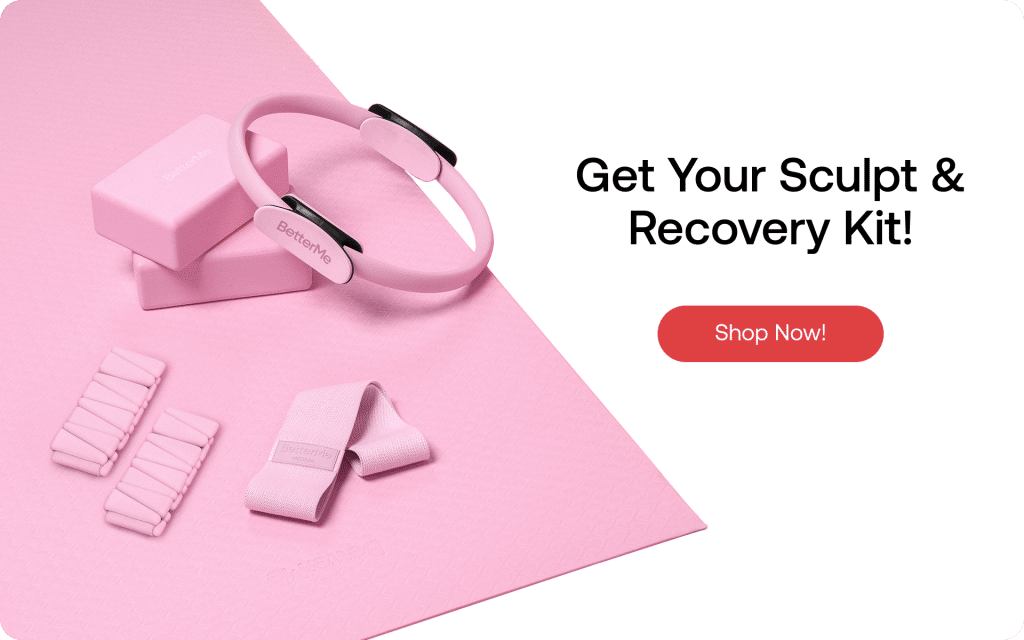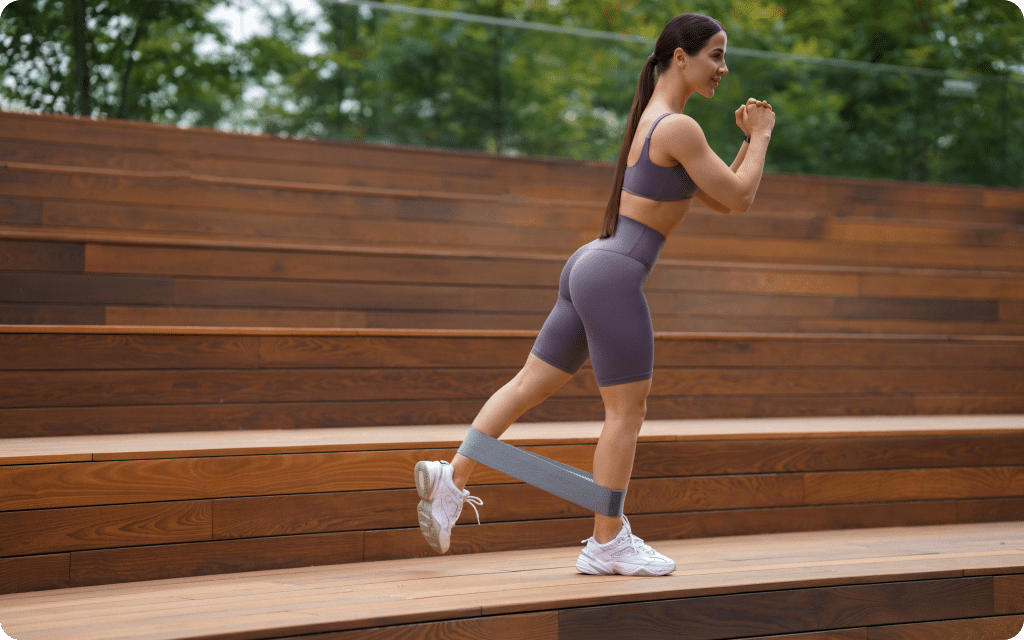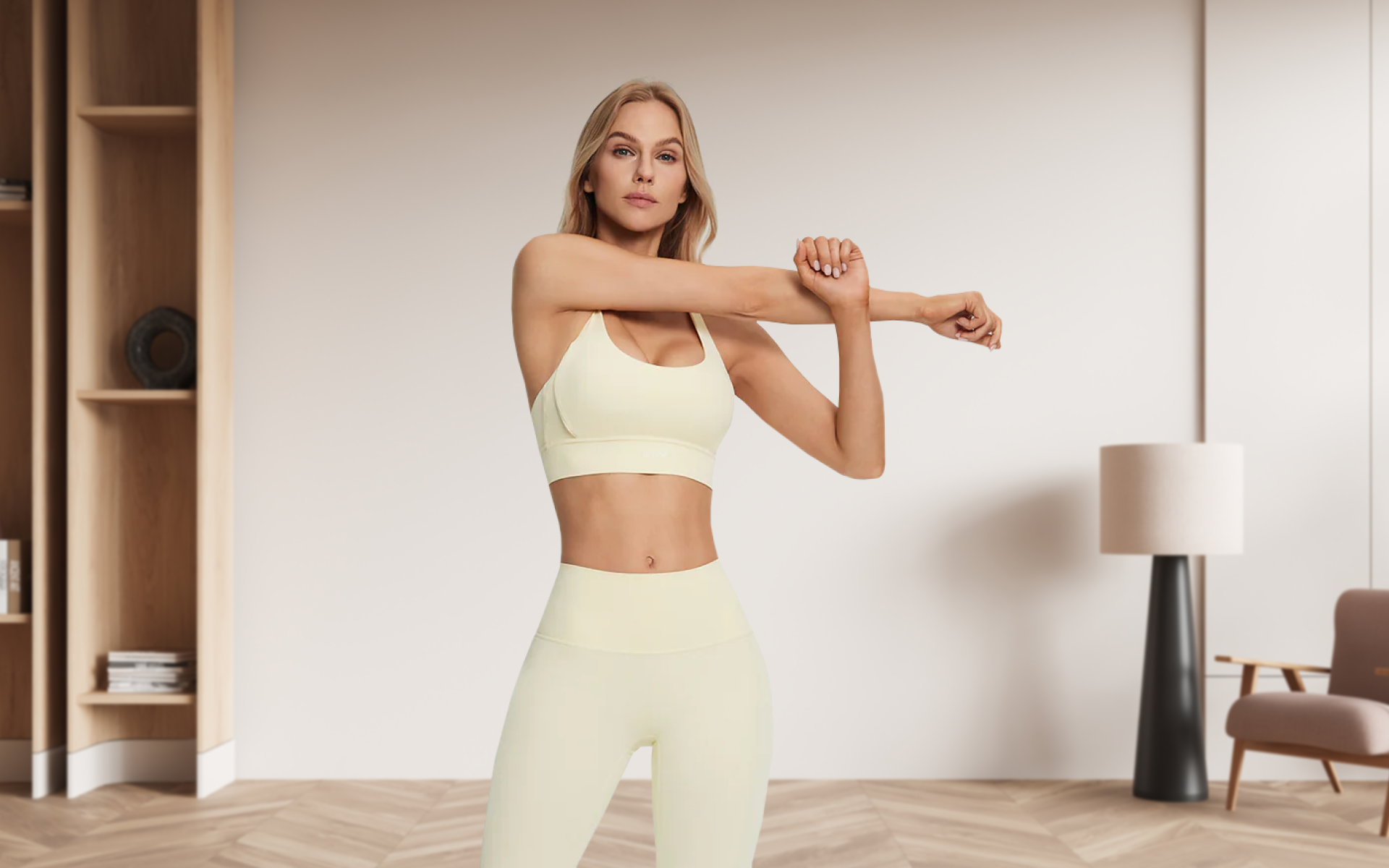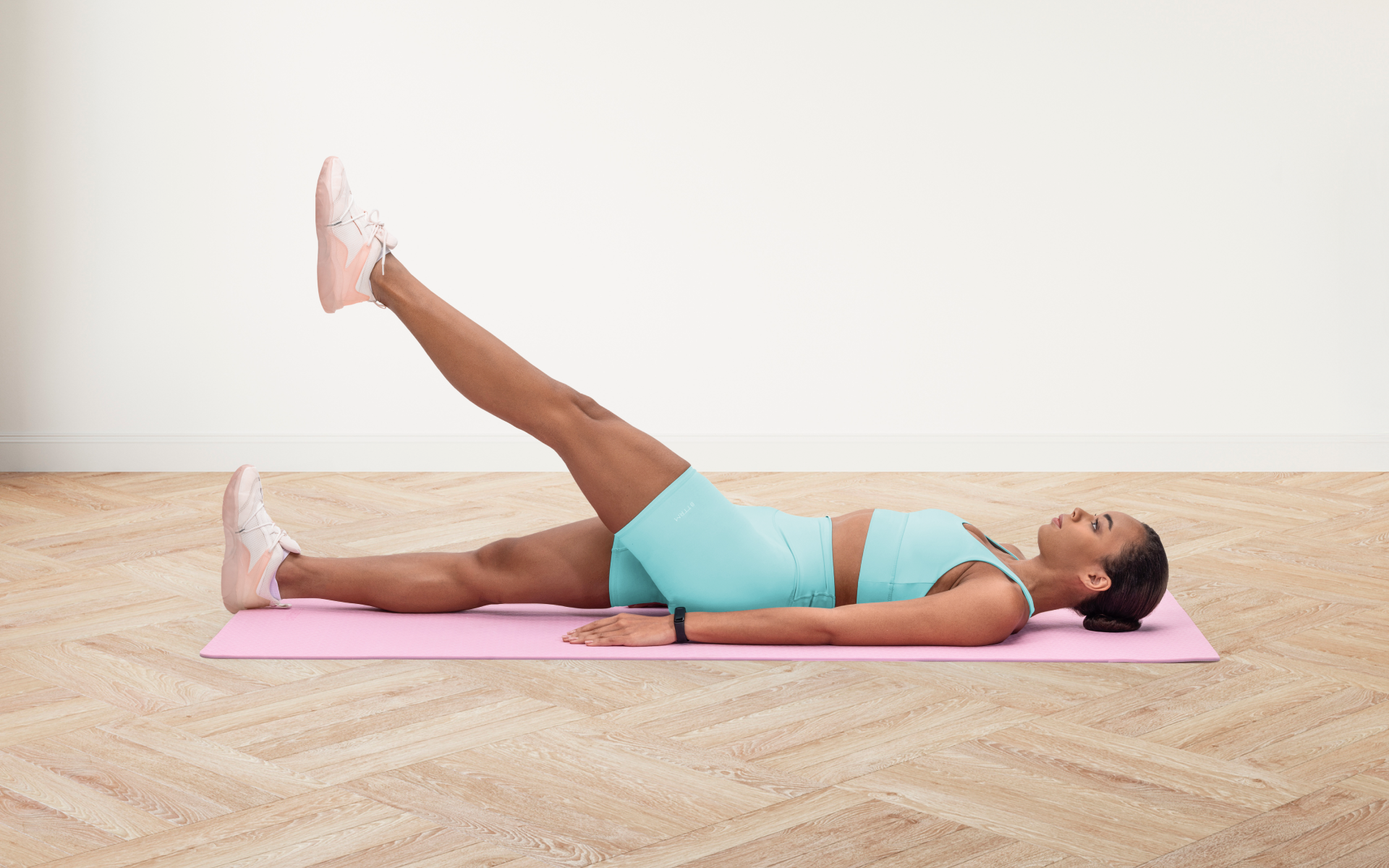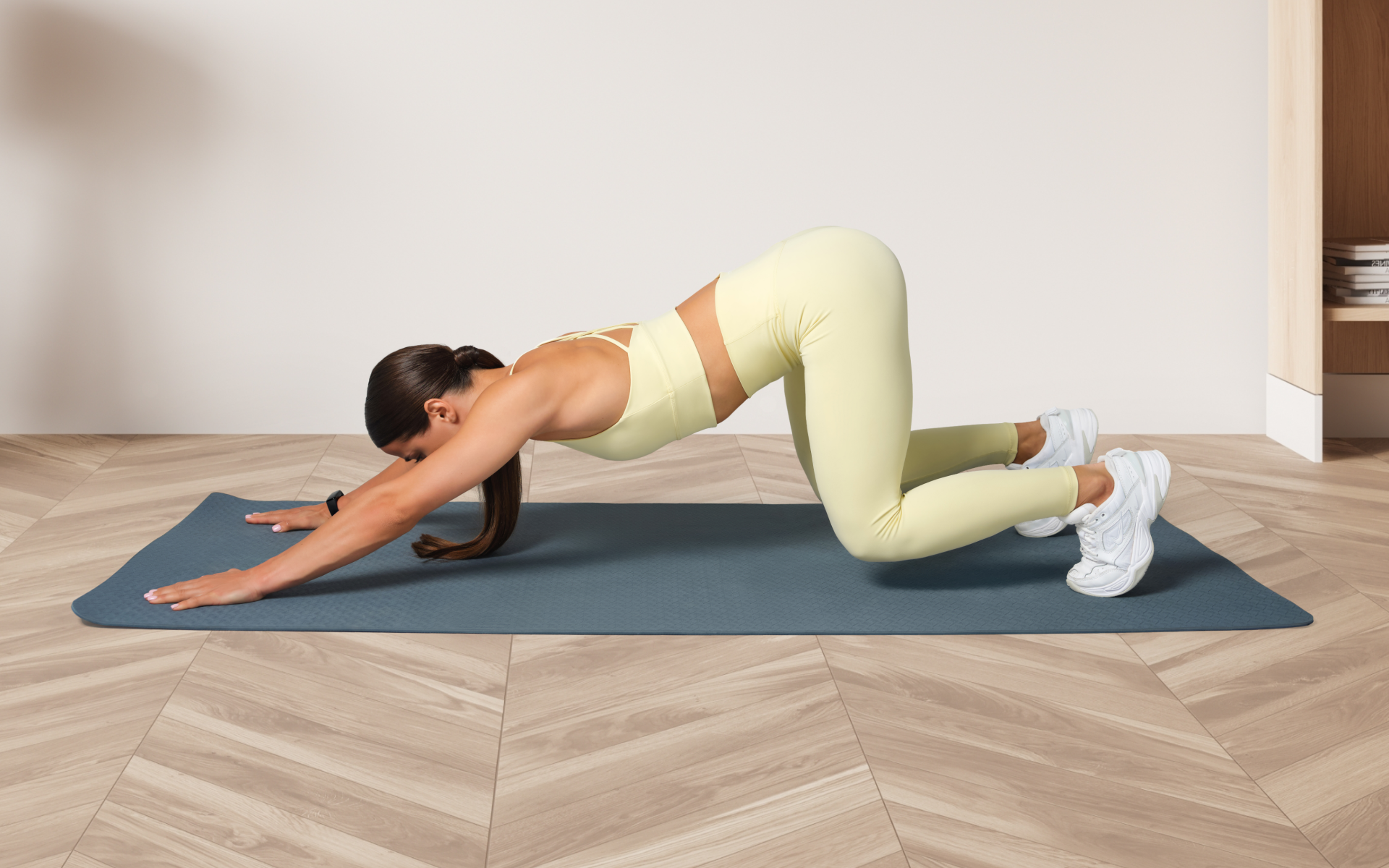Are you mesmerized by ballet dancers? Flexible and strong, they can perform any move without much effort. Your inner desire to perform exquisite moves just like those dancers is no longer a fantasy since barre Pilates arrived.
Barre Pilates is a combination of ballet, yoga, and Pilates. It is a super energizing, whole-body workout that involves high-repetition bodyweight exercises that hold the muscles in the legs, arms, and glutes under tension for an extended period.
Each barre class helps you build alignment, strengthen your core, tone, and elongate muscles.
“Barre” references the prop that is used to help you balance and focus on holding your body still while you contract a specific set of muscles or perform a specific movement. Despite the use of small movements, you’ll most likely feel a real burn and reap numerous health benefits when you perform it consistently.
Today we’ll explore 7 reasons to start barre Pilates today, discuss the differences and similarities of barre vs. Pilates, and disclose beginner-friendly movements you can perform at home.
What is Barre Pilates?
Barre Pilates is a workout that combines ballet-inspired moves, yoga, and Pilates. This activity involves low-impact training that focuses primarily on the lower body.
Usually, barre Pilates classes start with a short warm-up to prepare the body for the physical demands of the upcoming activity.
This type of training helps strengthen the muscles that are required to maintain posture, stability through the joints, and balance.
Barre is a low-impact strength-building workout, but it differs from traditional strength training due to its emphasis on small, controlled movements using body weight and light resistance, as opposed to the standard free weights and machines you typically think of. Barre also incorporates more isometric holds than most traditional strength training programs. In addition, some poses also include small range of motion pulses.
Barre Pilates equipment can involve resistance bands, light hand weights, or weighted exercise balls to enhance the intensity of the exercises. You perform the movements by either standing at a ballet bar, sitting, or lying on a yoga mat.
What Does Barre Pilates Do?
Let’s discuss the 7 reasons to integrate this type of training into your fitness routine.
Benefits of Barre Workout or barre Pilates are interchangeable as both of them focus on posture, core strength, and body alignment. They’re also low-impact forms of exercise, which makes them approachable for beginners, seniors, or anyone who is looking to supplement their current workout routine.
Some of the benefits of barre include:
- It helps build strength
- It helps improve flexibility
- It helps promote postural awareness
- It helps improve muscular endurance
- It helps boost mental health
- It helps with muscle engagement throughout the body
- It helps improve coordination and balance
It helps you build overall strength
Barre Pilates is a full-body form of exercise that can be performed by almost anyone. The variety of movement patterns incorporated in the practice will provide functional strength gains for most participants, assuming regular practice occurs. The muscle groups that receive the greatest benefits are typically the glutes, quadriceps, hamstrings, calves, and feet.
A barre workout strengthens your core and also enhances overall body balance. In most Pilates barre classes, you’ll practice balancing on one leg while externally rotating from the hips. These multidirectional movements engage muscles from various angles, fostering functional stability. As a result, you’ll likely feel more confident and capable of performing challenging tasks in your day-to-day life.
It helps improve flexibility
Barre Pilates poses enhance flexibility and promote passive stretching of your muscles, ligaments, and tendons. As these structures move through their full range of motion, everyday activities such as bending over to pick up an item from the floor become easier (2).
It helps promote postural awareness
As most people know, prolonged sitting, or nearly any prolonged posture associated with a sedentary lifestyle, can make your back ache. As we’ve discussed in previous articles, traditional and wall Pilates have great potential for improving awareness of your posture throughout the day and breaking the negative cycle of prolonged sitting (3). Barre Pilates has the same benefits. It demands precise alignment from head to toes, emphasizing the hips, spine, neck, and shoulders.
In addition, barre Pilates helps improve core strength, which further contributes to postural control. Get ready for less slouching and a more confident stride!
Intense sweat sessions, working weight loss tips, lip-smacking recipes come in one package with the BetterMe app. And all of it is at your fingertips, start transforming your life now!
It helps improve muscular endurance
Barre involves holding your body in different positions on a yoga mat or at a barre in a studio. They are isometric exercises, in which muscles contract without movement (4). If you’re working with a barre instructor, they may even ask you to add pulses — repeated tiny motions of a body part — to your isometric holds.
As barre movements are small, they build serious muscular endurance, which is the ability to produce and maintain force for a prolonged period. Improved muscular endurance can lead to improved postural control and functional capacity.
It helps boost your mental health
Even though there is a lack of research on the impact barre has on mental health, detailed research on yoga and Pilates demonstrate positive results. According to one study, both Pilates and yoga can improve mental clarity and help you think more positively (5).
Any physical activity can be a great mood booster as any exercise helps your body release endorphins to keep your mind sharp and your mood happier.
It helps with muscle engagement throughout the body
Barre Pilates is an all-encompassing form of exercise that requires muscle activation and control throughout the body. An advantage of barre Pilates over many other forms of exercise is its focus on the smaller, stabilizer muscle groups, which often get neglected in favor of a sole focus on the larger muscle groups.
While the larger muscle groups are certainly crucial, focusing on the stability muscles offers a more well-rounded approach to function and fitness.
It helps improve coordination and balance
The final essential reason to start barre Pilates is the ability it has to help improve your balance and coordination. Barre Pilates is among the most accessible ways to improve body awareness and coordination as it requires a strong focus on your body’s alignment from head to toe.
Some barre classes involve moving in rhythm with music, which has been shown to improve coordination and balance (1).
The importance of balance and coordination increases as we age and become more prone to falls. So whether you’re starting young or old, you’ll be investing in your long-term health.
What Is the Difference Between Barre and Pilates?
Minimal research has been conducted on Barre Pilates, particularly in comparison to traditional Pilates. The differences mainly come down to philosophies and principles. When you look more deeply into the design of each form of exercise, you’ll see their relationships are more like cousins than siblings.
Barre Pilates and traditional Pilates can both provide excellent full-body workouts. However, barre combines aspects of dance, strength training, Pilates, and yoga, while Pilates tends to emphasize the core in most of its movement patterns.
Barre tends to isolate smaller muscle groups using repetitive movements and pulses, while the movements in Pilates typically go through a wider range of motion. In addition, as the name implies, barre workouts typically feature a ballet barre, while Pilates can incorporate a reformer, wall, or no equipment at all.
Read more: Wall Pilates for Butt: A Quick Guide for Beginners
What Are the Best Barre Pilates Moves?
Barre is a fantastic activity for just about everyone. As it’s low-impact, it’s modifiable to all fitness levels. If you have any issues with your ankles, knees, or hips, make sure to let the instructor know ahead of time.
A professional instructor can help you modify the movements to place less stress on those areas. However, those who aren’t ready for private or group barre Pilates sessions can try this activity at home.
It’s no problem if you don’t have a barre – a sturdy chair will work perfectly fine.
Jump into these 5 easy movements. Remember to perform a warm-up before and a cool-down after the session.
Pilates Curtsey
How to perform the move:
- Place one hand on your chair, extend the other hand out to the side, and straighten the same leg out to the side while pointing your toes.
- Place the extended leg behind you, keep the heel lifted, and bend both legs while taking your arm from your side to above your head. Keep your shoulders down and back.
- Extend the working leg back to the side and take your arm with you.
- Repeat for the other side.
- Face forward with your hips for the entire movement.
Balance into Leg Extend
How to perform the move:
- Extend your leg, lifting it in the air and draw your belly button back toward your spine.
- Bend the lifted leg in toward your chest, lift your arm above your head, and return to your extended leg lift position.
Extended Leg Lift
How to perform the move:
- Face your chair and put both hands on it.
- With a long and flat spine, scoop your belly button back toward your spine, and extend one leg back while slightly bending the other leg.
- Extend one leg behind you and point through your toes.
- Squeeze your glutes without arching your back and lift your leg, then control it as you lower down. Make sure you focus on lengthening your leg out as long as possible.
- Repeat for the other side.
Knee Repeaters
How to perform the move:
- Get into a lunge position, with one leg back and your front leg bent. Hinge forward and straighten your back leg.
- Place your fingertips lightly onto your chair.
- With your core engaged, bring the back leg in toward the front leg. Keep your front knee bent the entire time.
- Take the working leg back to your lunge position and repeat the movement.
Side Leg Lift
How to perform the move:
- Place one hand on your chair or barre, and extend the other hand over your head with your shoulders facing to the side.
- Extend the leg that is furthest away from the chair out to the side with your toes pointed. Bend the supporting leg slightly.
- Rotate the working leg to face down toward your mat.
- Lift your working leg and take your arm to the side; reverse this movement and control the leg down.
Whether you’re looking to simply pep up your fitness routine, jazz up your diet with mouth-watering low-calorie recipes or want to get your act together and significantly drop that number on your scale – BetterMe app has got you covered! Improve your body and revamp your life with us!
FAQs
Can you lose weight doing Pilates or barre?
Barre and Pilates workouts can be beneficial for weight loss. Both forms of exercise offer high- and low-intensity options. High-intensity sessions will burn more calories in less time, but that doesn’t mean you also can’t get great results with low-intensity sessions. You may just need to increase the time of the session or the frequency per week to achieve the same calorie burn.
Finally, the most essential factor for losing weight is your diet: eating healthier meals at a calorie deficiency will speed up the process.
Is Barre closer to yoga or Pilates?
Barre includes principles from both of these forms of exercise, but it is generally closer to Pilates than yoga. Therefore, if you’re looking for low-impact physical activity for better posture, flexibility, and core strength, barre is the one for you.
Is barre enough weight training?
Barre is a great form of training that helps promote muscular strength and endurance. However, it’s still likely not enough to help you gain significant strength or muscle mass. If these goals are important to you, make sure to incorporate a dedicated strength training program.
Why are barre classes so hard?
Barre classes incorporate prolonged muscle activity from many muscle groups throughout the body. In addition, some barre classes are designed at a higher intensity that may be challenging cardiovascularly. As with any form of exercise, it’s important to stick with it if you want to see prolonged results. As your body adapts to the activity you’re asking it to perform, the barre exercises that were once so difficult for you will become less difficult.
The Bottom Line
Barre Pilates is a workout that combines ballet-inspired moves, yoga, and Pilates. This activity involves traditional elements of a classical ballet barre workout, Pilates, and contemporary leg exercises and offers low-impact training that is focused on the lower body, but incorporates the whole body.
We have discussed 7 reasons to start barre Pilates today, including better posture, enhanced muscular endurance, increased overall strength, improved flexibility, possible mental health boost, and better coordination and balance. This full-body activity can be easily modified to suit different fitness levels.
Barre routines can be performed either at home or at a studio under the supervision of a trainer. Start with the 5 barre Pilates moves that are presented in this article or try your own program.
DISCLAIMER:
This article is intended for general informational purposes only and does not serve to address individual circumstances. It is not a substitute for professional advice or help and should not be relied on for making any kind of decision-making. Any action taken as a direct or indirect result of the information in this article is entirely at your own risk and is your sole responsibility.
BetterMe, its content staff, and its medical advisors accept no responsibility for inaccuracies, errors, misstatements, inconsistencies, or omissions and specifically disclaim any liability, loss or risk, personal, professional or otherwise, which may be incurred as a consequence, directly or indirectly, of the use and/or application of any content.
You should always seek the advice of your physician or other qualified health provider with any questions you may have regarding a medical condition or your specific situation. Never disregard professional medical advice or delay seeking it because of BetterMe content. If you suspect or think you may have a medical emergency, call your doctor.
SOURCES:
- Does Regular Dancing Improve Static Balance? (2021, ncbi.nlm.nih.gov)
- Effect of a physical training program using the Pilates method on flexibility in elderly subjects (2015, springer.com)
- Effects of Pilates exercises on spine deformities and posture: a systematic review (2024, ncbi.nlm.nih.gov)
- Isometric/Isotonic Exercise (ringer.com)
- The effects of Pilates and yoga participants on engagement in functional movement and individual health level (2019, e-jer.org)


